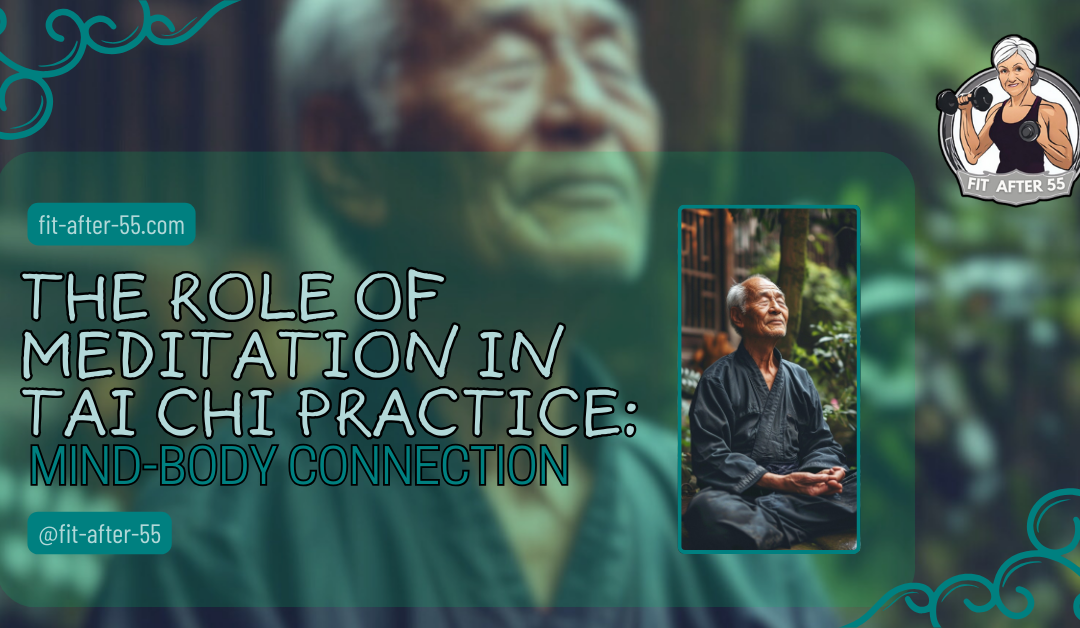Meditation in Tai Chi practice isn’t just about physical movement; it’s a journey of self-discovery and tranquility, especially beneficial for those over 55. As you flow through the gentle movements, you’ll find your mind calming, your body strengthening, and your spirit rejuvenating.
Ready to unlock the secrets of this ancient practice? Discover how Tai Chi can help you improve your balance, flexibility, and overall well-being. Let’s explore the profound connection between mind, body, and spirit through the graceful art of Tai Chi.
The Role of Meditation in Tai Chi Practice: Enhancing Mind-Body Connection
Tai Chi and meditation go hand in hand, creating a powerful practice for your mind and body. When you do Tai Chi, you’re not just moving – you’re also meditating.
The slow, flowing movements of Tai Chi help you focus your mind and become more aware of your body and breath, which are key parts of meditation.

You might think of Tai Chi as a form of moving meditation. As you practice, you learn to quiet your thoughts and pay attention to the present moment. This mindfulness can help you feel calmer and more centered, both during your Tai Chi session and in your daily life.
Combining Tai Chi with meditation can boost your wellness in many ways. It can help you relieve stress and anxiety, improve your focus, and even make you feel happier. By practicing regularly, you can develop a stronger connection between your mind and body, leading to better overall health.
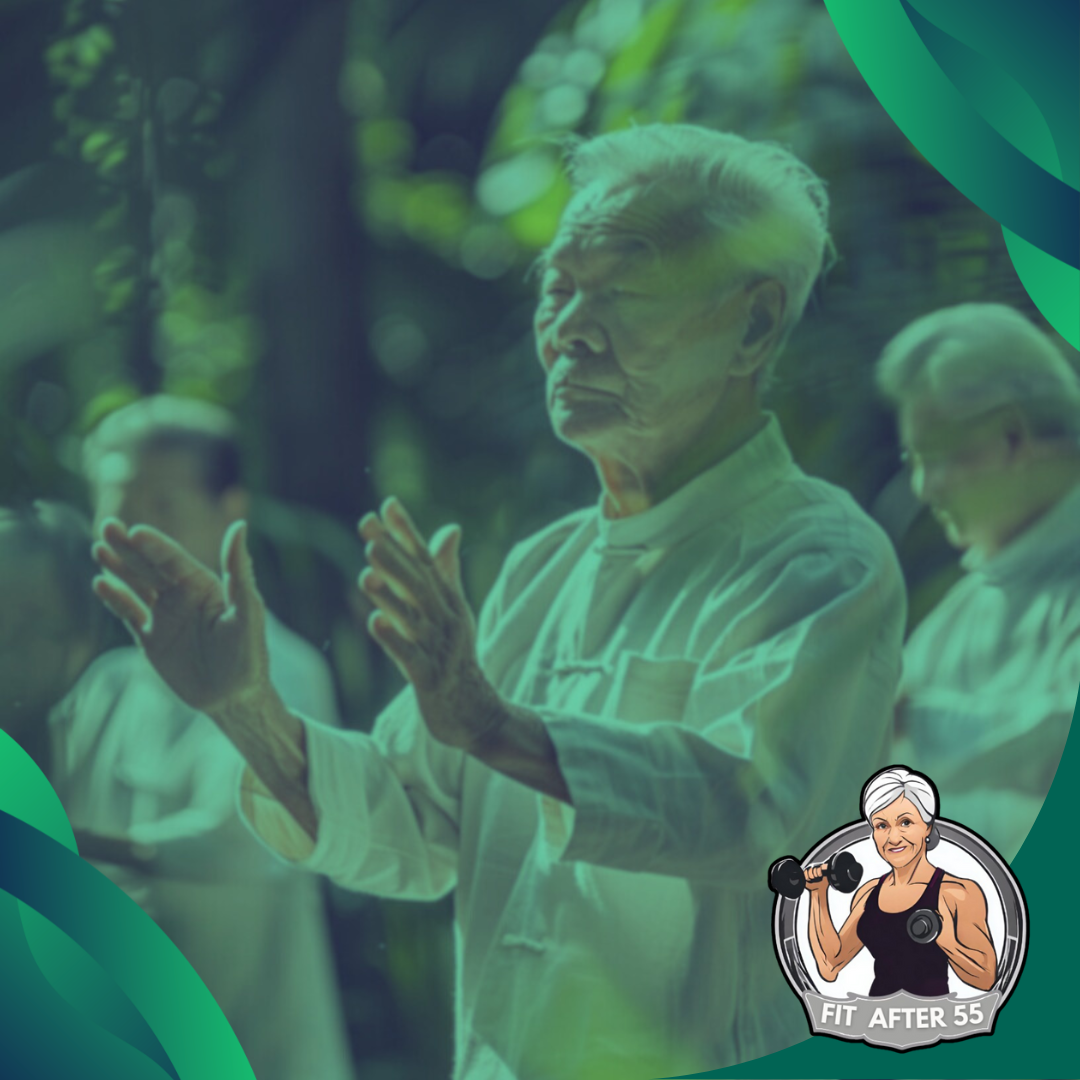
Key Takeaways
- Tai Chi and Meditation: A Powerful Duo: Tai Chi is a form of moving meditation that combines physical movement with mental focus. It helps to calm the mind, improve focus, and reduce stress.
- The Benefits of Tai Chi: Regular Tai Chi practice can improve physical health by enhancing flexibility, strength, and balance. It can also benefit mental health by reducing anxiety and depression.
- Incorporating Tai Chi into Daily Life: Tai Chi can be adapted to fit various lifestyles. Even short, daily practice sessions can yield significant benefits.
History and Foundations of Tai Chi

Tai Chi has deep roots in Chinese culture and philosophy. It combines martial arts with health practices and spiritual concepts. Let’s explore its origins and connections to traditional medicine.
Origins in Chinese Martial Arts
Tai Chi’s history goes back centuries in China. It started as a fighting style but grew into much more.
The Chen family created the first Tai Chi style in the 1600s. They mixed kung fu moves with Taoist ideas about balance.
Over time, new styles appeared:
- Yang style: Slower, gentler moves
- Wu style: Compact movements
- Sun style: Smooth, flowing steps
- Hao style: Small, subtle actions
Each style keeps the core ideas of Tai Chi. You focus on slow, careful moves and inner energy.
Tai Chi and Traditional Chinese Medicine
Tai Chi connects closely to Chinese medicine. Both aim to balance your body’s energy, called “qi.”
In Tai Chi, you learn to:
- Move with grace
- Breathe deeply
- Focus your mind
These skills help your qi flow freely. Good qi flow means better health in Chinese medicine.
Tai Chi also works with yin and yang. These are opposite forces in your body. The gentle moves of Tai Chi help balance them.
Many people find Tai Chi improves their health. It can help with stress, balance, and flexibility.
Essential Principles of Tai Chi
Tai Chi is built on key ideas that guide how you move and think. These ideas help you find balance and connect your mind and body.
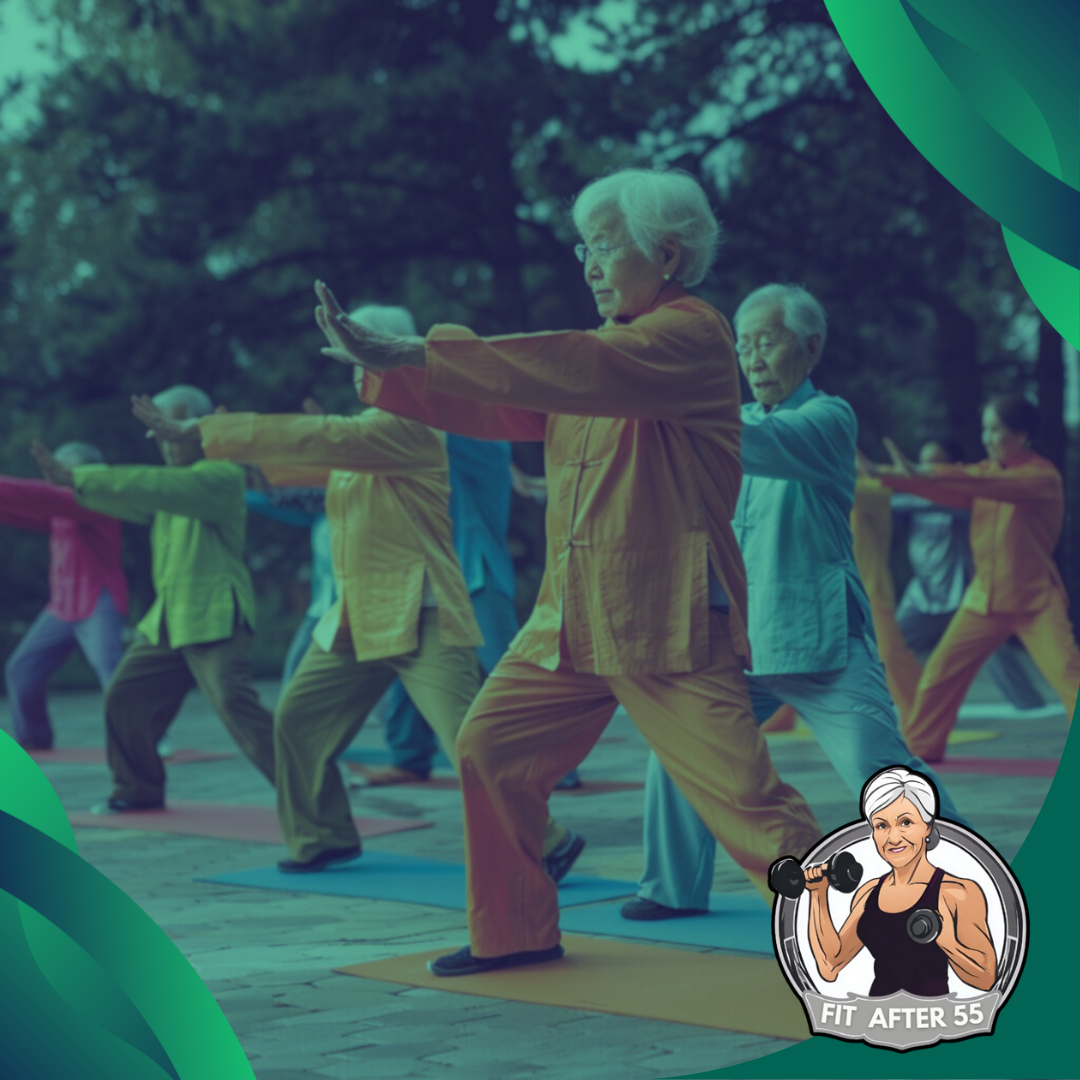
Understanding Qi and Tai Chi Chuan
Qi is a central idea in Tai Chi. It’s the life energy that flows through your body. Tai Chi Chuan helps you feel and direct this energy. As you practice, you learn to move this energy smoothly.
Your mind plays a big role in this. When you think about moving, your qi follows. This helps your body move as one unit. It’s like all parts of you are working together.
Tai Chi teaches you to relax deeply. This lets your qi flow better. As you get better at this, your moves become more fluid and strong.
The Significance of Yin and Yang
Yin and yang are key ideas in Tai Chi. They show how things that seem opposite can work together. In your practice, you learn to balance these forces.
Your moves in Tai Chi switch between yin and yang. Yin moves are soft and yielding. Yang moves are firm and active. By doing both, you learn to be both strong and flexible.
This balance helps in daily life too. It teaches you to be calm when things are busy, and active when needed. You learn to adjust to what’s happening around you.
Yin and yang also show up in how you breathe and stand. Deep, slow breaths balance with quicker ones. Stable stances mix with flowing steps. This helps you find harmony in your body and mind.
Meditative Aspects of Tai Chi
Tai Chi blends physical movement with mental focus. It helps you relax and quiet your mind while increasing your awareness of the present moment.
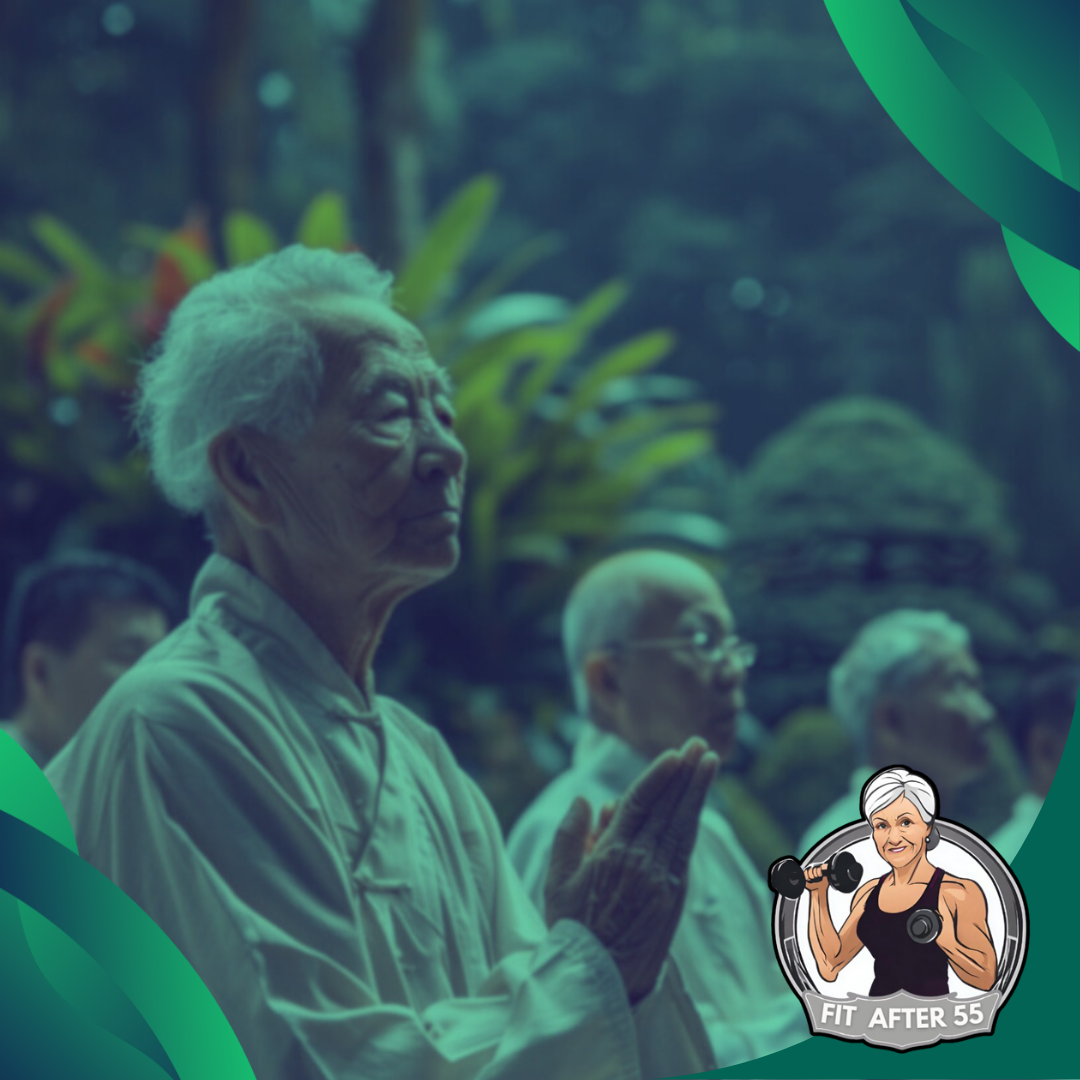
Tai Chi as Moving Meditation
Tai Chi is often called moving meditation. As you practice, you focus on your breath and movements. This helps clear your mind of distractions.
You’ll learn to pay attention to how your body feels as you move. Notice the way your weight shifts and your muscles engage. This body awareness is a form of meditation.
The slow, flowing motions of Tai Chi help you enter a meditative state. As you repeat the forms, your mind becomes calm and centered.
Achieving Tranquility and Mindfulness
Tai Chi teaches you to be fully present in each moment. You learn to let go of stress and anxiety as you practice.
Focus on your breathing to increase mindfulness. Take slow, deep breaths as you move through the poses. This helps quiet your mind and relax your body.
Regular practice can boost your ability to stay calm in daily life. You’ll find it easier to let go of worries and stay grounded.
Tai Chi also improves your focus and concentration. As you learn the forms, you train your mind to stay alert yet relaxed.
Health Benefits of Tai Chi and Meditation
Tai chi and meditation offer a wide range of health benefits for your body and mind. These practices can improve your physical fitness, emotional well-being, and overall quality of life.
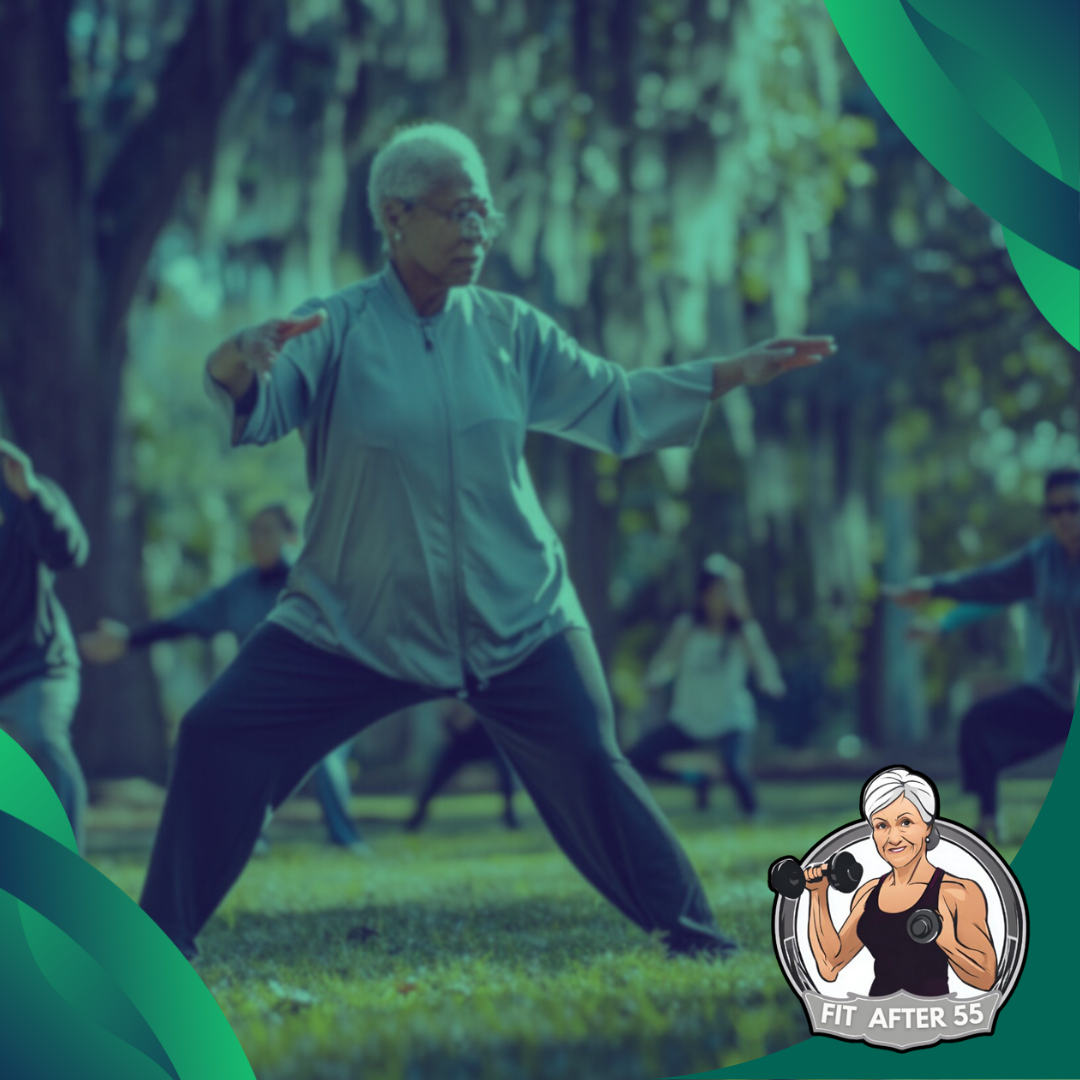
Improving Physical Health and Flexibility
Tai chi can boost your muscle strength and flexibility. This makes it easier for you to recover from stumbles and reduces your fear of falling.
The gentle movements of tai chi can enhance your stamina and cardiovascular health. You may notice improvements in your blood pressure and overall heart health.
Tai chi is also beneficial for people with chronic pain conditions. It can help you manage discomfort and increase your range of motion.
For those with osteoporosis, tai chi may help strengthen your bones and improve balance.

Mental Well-being and Emotional Balance
Tai chi is often called “moving meditation.” It can help you reduce stress and anxiety in your daily life.
The practice combines physical movement with deep breathing. This can calm your mind and improve your focus.
You may experience better mental clarity and emotional stability through regular tai chi practice. It can help you manage mood swings and promote a sense of inner peace.
Tai chi can also boost your cognitive abilities. You might notice improvements in your memory and decision-making skills.
Tai Chi in Medical Studies and Systematic Reviews
Research suggests tai chi has many health benefits. Systematic reviews have shown positive effects on various health conditions.
Tai chi may help you manage:
- Cardiovascular disease
- Chronic pain
- Balance issues
- Stress and anxiety
Many studies use randomized controlled trials to evaluate tai chi’s effectiveness. These trials provide strong evidence for its health benefits.
Researchers continue to explore how tai chi can improve quality of life for people with different health conditions. The growing body of evidence supports its use as a complementary health practice.
Tai Chi Practice and Techniques

Tai Chi combines gentle movements with meditation to improve your physical and mental well-being. It helps you find inner calm and balance through focused practice.
Basic Tai Chi Movements and Sequences
Tai Chi movements are slow, fluid, and graceful. You’ll start with basic stances like the “horse stance” and “bow stance” to build strength and stability. As you progress, you’ll learn flowing sequences called “forms.”
Common movements include:
- “Parting the Wild Horse’s Mane”
- “Grasping the Bird’s Tail”
- “Wave Hands Like Clouds”
Practice these moves slowly, focusing on your posture and breathing. Each movement flows into the next, creating a continuous sequence. With time, you’ll develop better coordination and body awareness.
Remember, Tai Chi is not about perfection. It’s about the journey of learning and improving. Take your time and enjoy the process.
Incorporating Meditation into Tai Chi
Tai Chi is often called “meditation in motion.” As you practice, you’ll learn to quiet your mind and focus on the present moment. This mindfulness aspect is key to reaping the full benefits of Tai Chi.
To incorporate meditation into your Tai Chi practice:
- Start with a few minutes of standing meditation.
- Focus on your breath as you move through the forms.
- Pay attention to how your body feels during each movement.
By combining movement with meditation, you can achieve a state of deep relaxation and inner peace. This practice helps reduce stress and improve your overall well-being.
Breathing Exercises and Deep Focus
Proper breathing is crucial in Tai Chi. It helps you move more efficiently and enhances your focus. Practice deep, diaphragmatic breathing to improve your Tai Chi experience.
Try this simple breathing exercise:
- Inhale slowly through your nose, expanding your belly.
- Exhale gently through your mouth, letting your belly relax.
- Repeat for a few minutes, focusing solely on your breath.
As you practice Tai Chi, sync your movements with your breath. This coordination of breath and movement helps you achieve a state of deep focus and relaxation. It allows you to let go of distracting thoughts and fully immerse yourself in the practice.
Remember, consistent practice is key. Even a few minutes of daily Tai Chi and breathing exercises can make a big difference in your physical and mental well-being.
Integrating Tai Chi and Meditation into Daily Life

Tai Chi and meditation can become powerful tools for self-discovery and stress reduction when woven into your daily routine. By adapting these practices to fit your needs, you can improve your overall wellness and quality of life.
Tai Chi for Stress Reduction and Quality of Life
Practicing Tai Chi regularly can help you manage stress and boost your well-being. Try starting your day with a short Tai Chi session to set a calm tone for the hours ahead. Even just 10-15 minutes can make a difference.
You can also use Tai Chi movements as quick stress-busters throughout your day. When you feel tension building, take a moment to do some gentle Tai Chi exercises at your desk or during a break.
For older adults, Tai Chi offers a gentle way to stay active and improve balance. It’s a safe, low-impact exercise that can be done almost anywhere.
Adapting Techniques for Individual Needs
Everyone’s lifestyle and needs are different. So, it’s important to tailor your Tai Chi and meditation practice to fit your life.
If you’re short on time, try breaking your practice into smaller chunks throughout the day. You might do a few Tai Chi movements in the morning. Then, practice mindful breathing during your lunch break. Finally, end your day with a short meditation session.
This approach can help you build a consistent habit without overwhelming your schedule. For those dealing with specific health issues, working with a Tai Chi instructor can help you modify movements to suit your needs. Many integrative health programs now include Tai Chi as part of a personalized wellness plan.
The Spiritual and Self-Development Journey

Tai Chi offers a path to self-discovery and inner peace. Through its meditative movements, you can explore your consciousness and boost your well-being.
Fostering Self-Awareness and Inner Growth
As you practice Tai Chi, you’ll notice a growing sense of self-awareness. The slow, deliberate movements encourage you to be fully present in the moment.
This heightened awareness helps you connect with deeper parts of yourself. You might find that Tai Chi helps you:
- Calm your mind
- Improve your focus
- Release feel-good endorphins
These benefits can lead to spiritual growth and a greater sense of inner harmony. As you move through the poses, you may feel a stronger connection between your body, mind, and spirit.
Tai Chi as a Path to Self-Defense and Confidence
While Tai Chi is known for its gentle nature, it’s also a martial art that can boost your confidence. As you learn the moves, you’ll develop a better understanding of your body’s capabilities.
This newfound body awareness can help you feel more secure in your daily life. You might notice:
- Improved balance
- Better posture
- Increased strength
These physical changes often lead to a boost in self-esteem. As you master the art of Tai Chi, you’ll likely feel more confident in your ability to protect yourself if needed.
Meditation in Tai Chi Practice: A Path to Inner Peace and Well-being

Tai Chi and meditation work hand in hand to create a powerful practice for your mind and body. By combining slow, graceful movements with mindfulness, you can tap into a deeper sense of calm and awareness.
As you continue your Tai Chi journey, remember that it’s more than just physical exercise. It’s a holistic approach to wellness that nurtures your entire being.
Don’t worry if you’re not perfect right away! Tai Chi is a lifelong practice that grows with you. Each session is a chance to find a bit more inner peace and balance in your life.
Remember to be patient with yourself. As you practice, you’ll likely notice improvements in your focus, flexibility, and overall sense of well-being.
Keep exploring the meditative aspects of Tai Chi. They can help you cultivate a deeper connection between your mind, body, and spirit.
Embrace the journey of Tai Chi and meditation. You’re not just learning a set of movements – you’re developing a skill that can bring more harmony and joy to your everyday life.

Frequently Asked Questions

Tai Chi meditation offers many benefits for both mental and physical health. It can help reduce stress, improve focus, and enhance overall well-being.
What are the advantages of incorporating meditation into Tai Chi practice?
Meditation in Tai Chi can boost your cognitive abilities. It helps you stay present and focused during your practice.
You may find it easier to learn and remember Tai Chi movements. The meditative aspect can also deepen your connection to your body and breath.
How can Tai Chi meditation benefit mental health, particularly for anxiety and depression?
Tai Chi meditation can be very helpful for managing anxiety and depression. The slow, mindful movements combined with deep breathing can calm your mind.
This practice relieves stress and anxiety by triggering the release of feel-good endorphins. Regular practice may improve your mood and help you feel more relaxed overall.
What are some meditation techniques used in Tai Chi for enhancing personal well-being?
Tai Chi uses several meditation techniques to enhance well-being. Deep and controlled breathing is a key part of the practice.
You’ll also learn to focus on your body’s movements and sensations. Some instructors may guide you through visualizations or mantras to deepen your practice.
Can practicing Tai Chi and its meditative aspects have specific benefits for seniors?
Yes, Tai Chi can be especially beneficial for seniors. It’s a low-impact exercise that improves balance and flexibility, which can help prevent falls.
The meditative aspects can boost cognitive function and reduce stress. Many seniors find that Tai Chi helps them feel more energetic and improves their overall quality of life.
For someone new to the practice, what are the basics of Tai Chi meditation?
If you’re new to Tai Chi meditation, start with the basics. Focus on your breath and try to clear your mind of distractions.
Pay attention to how your body feels as you move through the poses. Don’t worry about perfection – just aim to stay present and mindful during your practice.
Is it possible for Tai Chi with its meditative focus to serve as a complete meditation practice?
Tai Chi can indeed serve as a complete meditation practice. It combines physical movement, breathing exercises, and meditation.
This blend of elements can provide a well-rounded approach to mindfulness. Many people find that Tai Chi meets all their meditation needs in one practice.
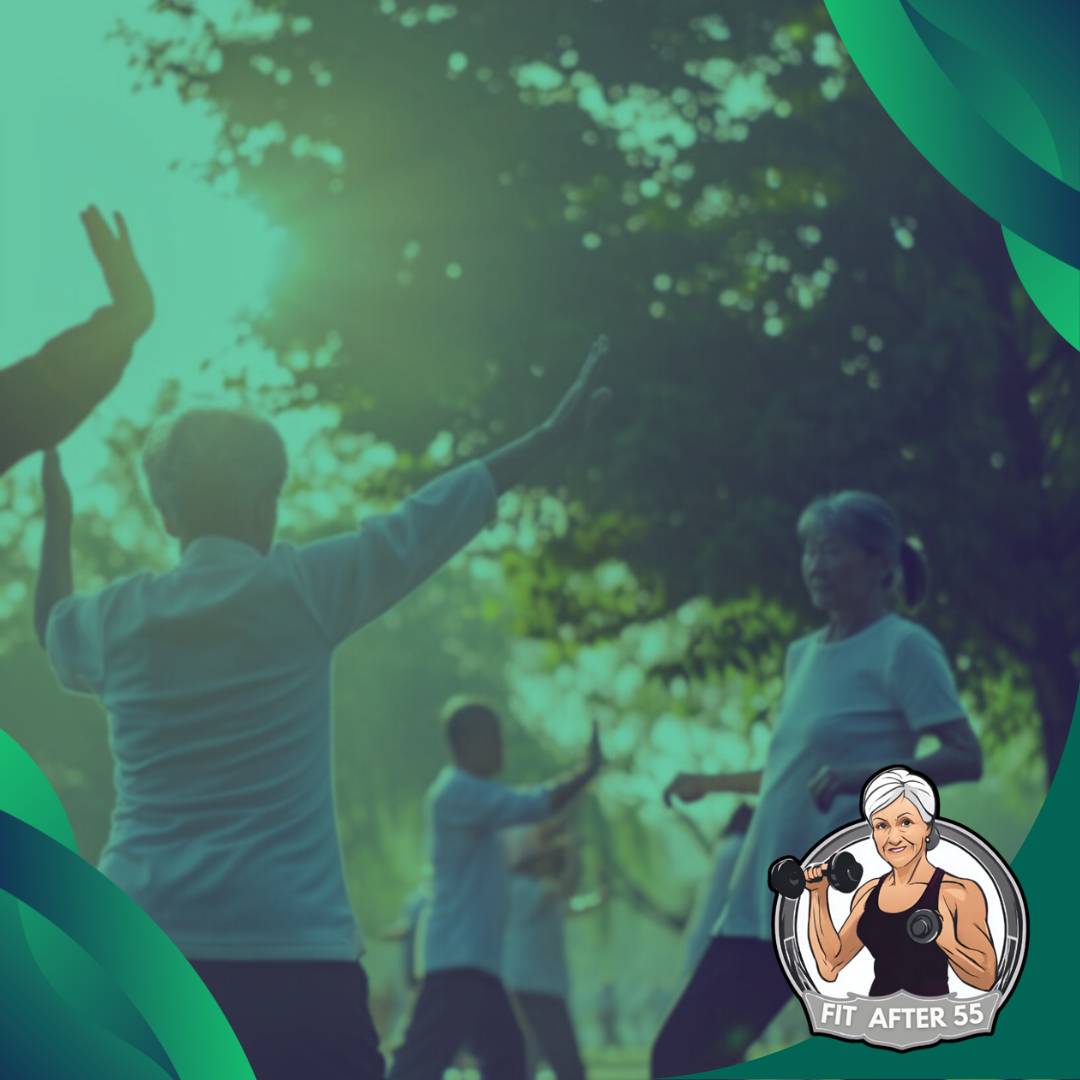
Move with Grace, Find Your Pace: Fitness After 55!
Looking for a supportive community and engaging content to fuel your fitness journey? Look no further! Visit our website (https://www.vitalityseniorliving.com/resources_for_senior/staying-fit-at-55/) for informative articles, product reviews, and inspiration. Join our Facebook group (https://www.facebook.com/profile.php) to connect with like-minded individuals and find encouragement for a healthier, happier you!

